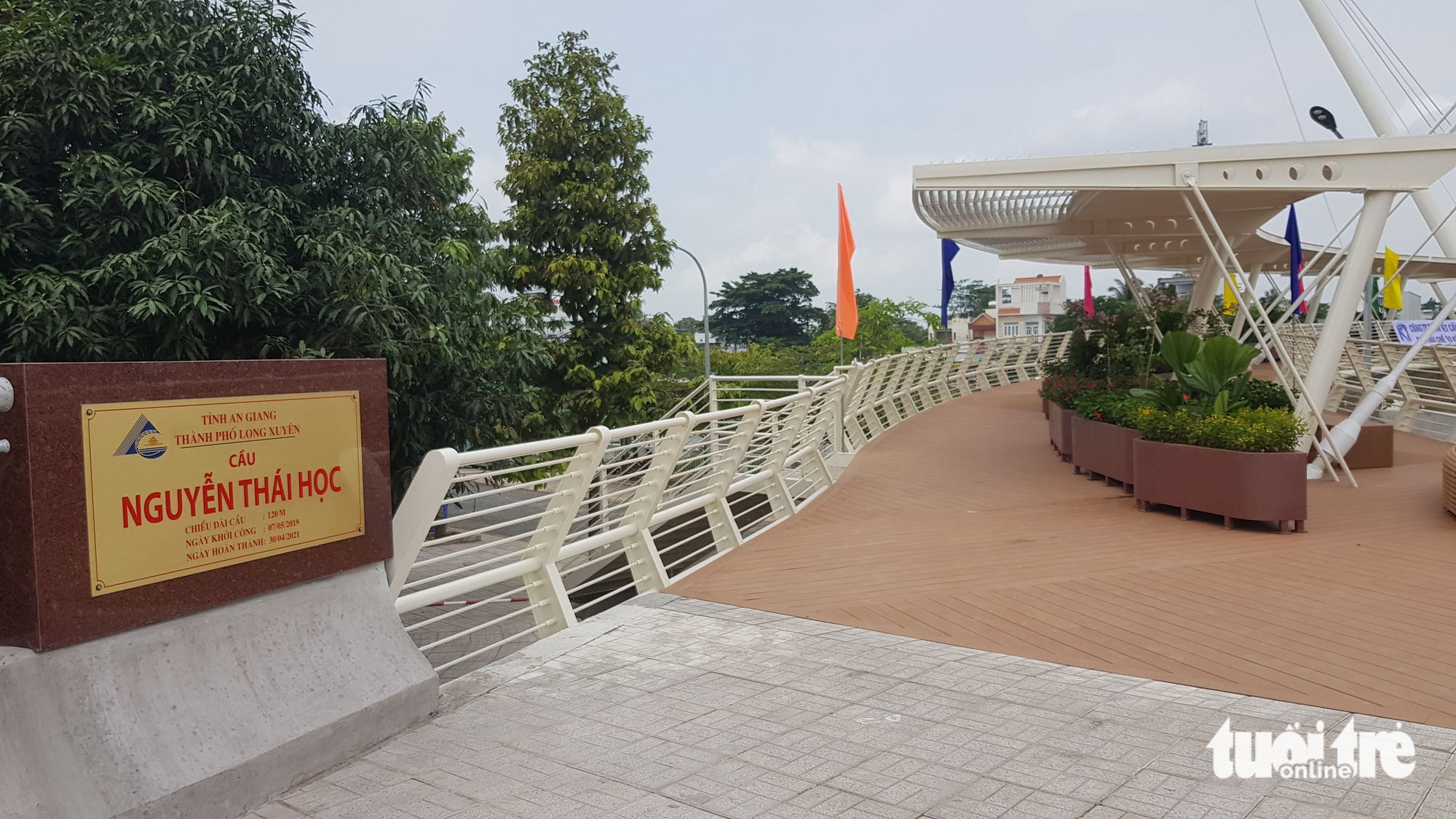Authorities in An Giang Province, southern Vietnam have changed a plan on the live load test of a footbridge, located in the provincial capital of Long Xuyen, with the participation of 400 people for a switch to another type of dead load over a public backlash.
“I asked the chairman of the People’s Committee of Long Xuyen City and the local police force to work with the southern chapter of the Institute of Transport Science and Technology in order to suspend the use of 400 people in the load assessment of the Nguyen Thai Hoc footbridge,” An Giang chairman Nguyen Thanh Vinh said on Tuesday evening.
Pham Van Hung, deputy head of the southern chapter, said that the substitute method will be a dead load check.
“We planned to test the structure health and load limit of the footbridge using 400 people, which is a normal, traditional way of bridge load testing, but the public opposed the plan, so we have switched to the static load test option,” Hung explained.
A public backlash erupted immediately after the announcement of the 400-people scheme, with many questioning whether the safety of the participants would be guaranteed.
|
|
| The Nguyen Thai Hoc footbridge in Long Xuyen City, An Giang Province, southern Vietnam. Photo: Buu Dau / Tuoi Tre |
Hung affirmed that the original plan for live load testing with humans meets the need of evaluating the Nguyen Thai Hoc footbridge, which is designed for pedestrians, who are a dynamic load.
By design, the footbridge is 128 meters long and 6.5 meters wide and can bear a load of 65 kilograms per square meter, equivalent to a capacity of 4,992 people throughout its entire span.
The cable-stayed structure curves round two times, with a main beam in the middle.
It is part of a bigger bridge project, the Nguyen Thai Hoc Bridge, which was opened to traffic in April 2021 after two years of construction.
Police in An Giang have investigated a case of violations on investment in construction works, causing serious consequences at the project, with a load test of the footbridge component needed to facilitate the investigation.
Like us on Facebook or follow us on Twitter to get the latest news about Vietnam!



















































